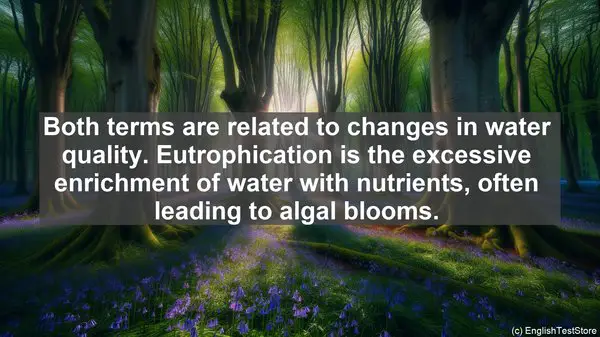Introduction: The Importance of Language Precision in Marine Biotechnology
Welcome to our marine biotechnology class. Today, we’re going to dive into a topic that might seem trivial, but is actually crucial in this field: commonly confused words. In marine biotechnology, where precision is key, using the right term can make all the difference. So, let’s get started!
1. Genetic Diversity vs. Genetic Variability
These two terms are often used interchangeably, but they have distinct meanings. Genetic diversity refers to the variety of genes within a population, while genetic variability refers to the extent of variation in those genes. Understanding this difference is vital when studying the adaptability of marine organisms to changing environments.

2. Biodegradation vs. Bioaccumulation
Both processes involve the interaction of marine organisms with pollutants. Biodegradation is the breakdown of pollutants by living organisms, while bioaccumulation is the gradual accumulation of these pollutants in an organism’s tissues. Knowing which process is at play is crucial when assessing the overall impact of pollutants in an ecosystem.
3. Phytoplankton vs. Zooplankton
These two groups of organisms are fundamental in marine food webs. Phytoplankton are microscopic plants that perform photosynthesis, while zooplankton are small animals that feed on phytoplankton. Recognizing the distinction is essential when studying energy transfer and nutrient cycling in marine ecosystems.
4. Benthic vs. Pelagic
These terms describe different zones in the ocean. Benthic refers to the ocean floor and the organisms that live there, while pelagic refers to the open water and the organisms that inhabit it. Understanding these zones is crucial when studying habitat preferences and species distribution in marine environments.
5. Eutrophication vs. Hypoxia
Both terms are related to changes in water quality. Eutrophication is the excessive enrichment of water with nutrients, often leading to algal blooms. Hypoxia, on the other hand, is the depletion of oxygen in water, often caused by the decomposition of excessive organic matter. Recognizing these processes is vital when assessing the health of marine ecosystems.

6. Invasive vs. Non-native Species
While both terms refer to species that are not native to an ecosystem, there’s a subtle difference. Invasive species have the potential to cause harm to the environment, economy, or human health. Non-native species, on the other hand, may not have such negative impacts. Understanding this difference is crucial when managing and conserving marine biodiversity.
7. Larva vs. Juvenile
These terms describe different life stages of marine organisms. Larva refers to the early, often distinct, stage of development, while juvenile refers to the young organism that resembles the adult but is not yet fully mature. Recognizing these stages is vital when studying population dynamics and reproductive strategies in marine species.
8. Mariculture vs. Aquaculture
Both terms involve the cultivation of marine organisms, but there’s a slight difference. Mariculture specifically refers to the cultivation of marine organisms in their natural habitats, while aquaculture is a broader term that includes the cultivation of both marine and freshwater organisms. Understanding this distinction is important when discussing sustainable food production.
9. Endemic vs. Indigenous
These terms describe the origin or native status of a species. Endemic species are exclusively found in a particular region, while indigenous species are native to a region but may also be found elsewhere. Recognizing these terms is crucial when assessing the conservation status and uniqueness of marine species.
10. Gel Electrophoresis vs. PCR
These are two common laboratory techniques in molecular biology. Gel electrophoresis is used to separate DNA fragments based on size, while PCR (Polymerase Chain Reaction) is used to amplify specific DNA sequences. Understanding which technique is appropriate for a particular analysis is essential in marine biotechnology research.
